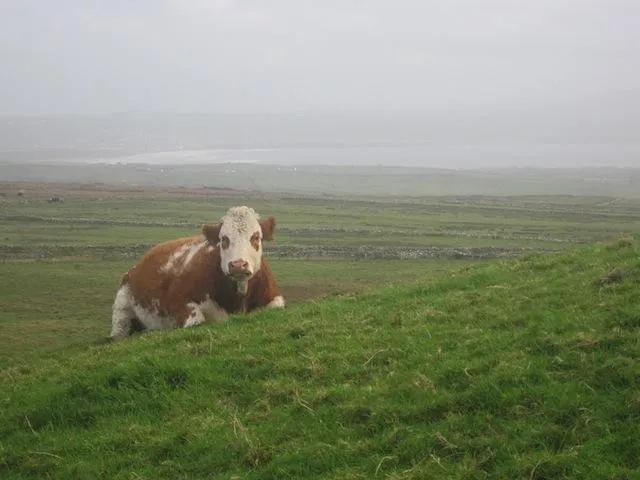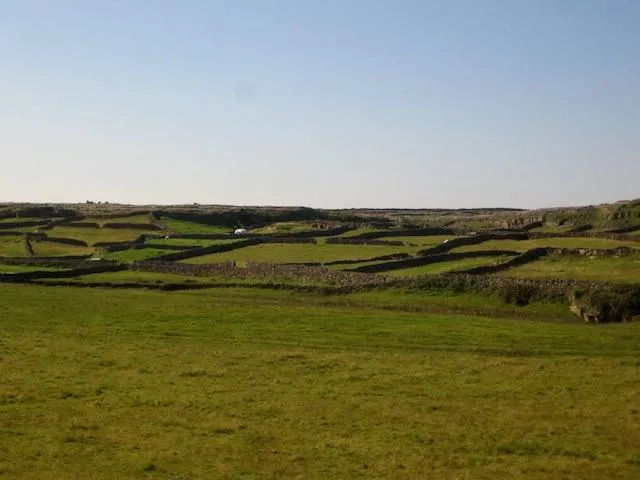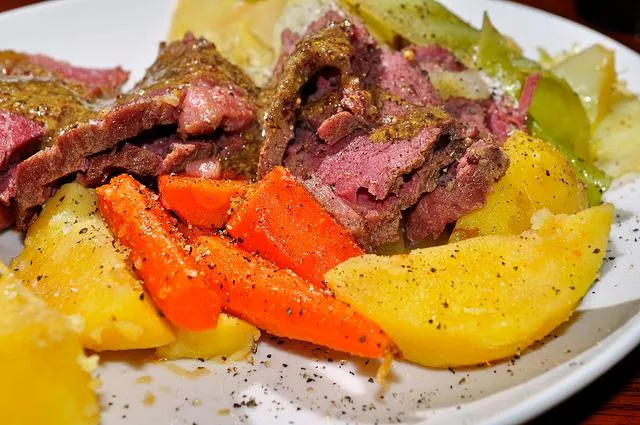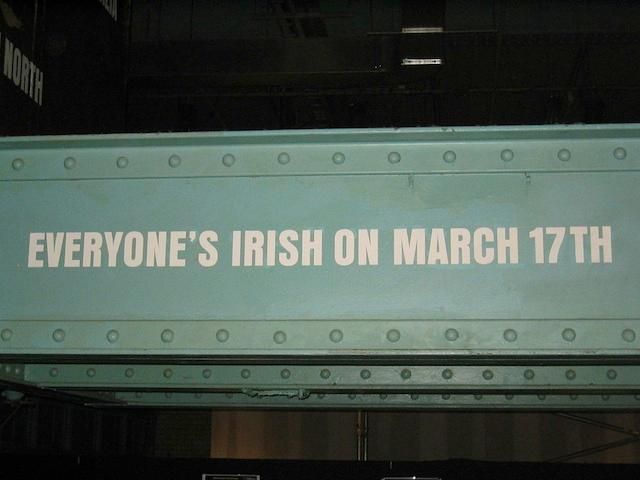Canned Corned Beef and Cabbage St Patty's Day
/https://tf-cmsv2-smithsonianmag-media.s3.amazonaws.com/filer/20130315084056corned-beef-cabbage-st-patricks-day-web.jpg)
It'due south hard to call up of St. Patrick'due south Day without glittered shamrocks, green beer, leprechauns, and of grade, corned beef and cabbage. Yet, if you went to Ireland on St. Paddy'southward Mean solar day, you would not find any of these things except maybe the glittered shamrocks. To begin with, leprechauns are non jolly, friendly cereal box characters, only mischievous nasty footling fellows. And, simply as much as the Irish would non pollute their beer with greenish dye, they would non eat corned beef, particularly on St. Patrick'southward Mean solar day. So why effectually the earth, especially in the US, is corned beef and cabbage synonymous with St. Paddy'southward Twenty-four hour period?
The unpopularity of corned beef in Republic of ireland comes from its relationship with beef in general. From early, cattle in Republic of ireland were not used for their meat but for their forcefulness in the fields, for their milk and for the dairy products produced. In Gaelic Ireland, cows were a symbol of wealth and a sacred animal. Considering of their sacred association, they were only killed for their meat if the cows were too onetime to work or produce milk. Then, beef was not even a part of the diet for the majority of the population. Just the wealthy few were able to eat the meat on a celebration or festival. During these early on times, the beef was "salted" to be preserved. The commencement salted beef in Ireland was actually not fabricated with salt only with sea ash, the product of burning seaweed. The 12th century verse form Aislinge Meic Con Glinne shows that salted beefiness was eaten by the kings. This verse form is one of the greatest parodies in the Irish language and pokes fun at the nutrition of King Cathal mac Finguine, an early Irish King who has a demon of gluttony stuck in his throat.
Wheatlet, son of Milklet,
Son of juicy Bacon,
Is mine own name.
Honeyed Butter-roll
Is the homo's
That bears my handbag.
Haunch of Mutton
Is my dog'due south name,
Of lovely leaps.
Lard my married woman,
Sweetly smiles
Beyond the kale-top
Cheese-curds, my daughter,
Goes around the spit,
Fair is her fame.
Corned Beefiness, my son,
Whose curtain shines
Over a big tail.
As the verse form mentions, juicy bacon or pork was also eaten. Pigs were the virtually prevalent animal bred only to exist eaten; fom aboriginal times to today, information technology earned the reputation equally the about eaten meat in Ireland.

The Irish gaelic diet and way of life stayed pretty much the same for centuries until England conquered nearly of the land. The British were the ones who inverse the sacred cow into a commodity, fueled beef production, and introduced the irish potato. The British had been a beef eating culture since the invasion of the Roman armies. England had to outsource to Republic of ireland, Scotland and somewhen North America to satisfy the growing palate of their people. As Jeremy Rifkin writes in his book, Across Beef: The Ascent and Fall of the Cattle Culture, "so beef-driven was England that information technology became the outset nation in the world to identify with a beefiness symbol. From the outset of the colonial era, the "roast beef" became synonymous with the well-fed British aristocracy and middle class."
Herds of cattle were exported by the tens of thousands each year from Ireland to England. Just, the Cattle Acts of 1663 and 1667 were what fueled the Irish corned beef industry. These acts prohibited the export of live cattle to England, which drastically flooded the Irish market and lowered the cost of meat bachelor for salted beef product. The British invented the term "corned beef" in the 17th century to describe the size of the table salt crystals used to cure the meat, the size of corn kernels. After the Cattle Acts, common salt was the main reason Republic of ireland became the hub for corned beefiness. Ireland'southward salt tax was about i/ten that of England'due south and could import the highest quality at an inexpensive price. With the large quantities of cattle and loftier quality of salt, Irish corned beef was the best on the market. Information technology didn't take long for Ireland to be supplying Europe and the Americas with its wares. But, this corned beefiness was much different than what we call corned beefiness today. With the meat being cured with salt the size of corn kernels, the taste was much more salt than beef.
Irish corned beef had a stranglehold on the transtlantic trade routes, supplying the French and British navies and the American and French colonies. It was at such a demand that even at war with France, England allowed French ships to stop in Ireland to purchase the corned beef. From a study published by the Dublin Constitute of Technology's Schoolhouse of Culinary Arts and Food Technology:
Anglo-Irish landlords saw exports to France, despite the fact that England and France were at war, as a ways of profiting from the Cattle Acts…During the 18th century, wars played a significant role in the growth of exports of Irish beef. These wars were mainly fought at sea and navies had a high demand for Irish salted beef for ii reasons, firstly its longevity at sea and secondly its competitive cost.
Ironically, the ones producing the corned beef, the Irish people, could not afford beefiness or corned beef for themselves. When England conquered Ireland, oppressive laws against the native Irish Catholic population began. Their land was confiscated and feudal like plantations were set up. If the Irish could afford any meat at all, salted pork or bacon was consumed. Simply, what the Irish really relied on was the potato.
By the end of the 18th century, the need for Irish corned beef began to decline as the Northward American colonies began producing their own. Over the next 5o years, the glory days of Irish corned beef were over. By 1845, a potato bane bankrupt out in Ireland completely destroying the food source for well-nigh of the Irish gaelic population, and The Keen Famine began. Without assistance from the British government, the Irish people were forced to work to death, starve or emigrate. Almost a million people died and some other million immigrated on "coffin ships" to the The states. To this twenty-four hour period, the Irish population is still less than information technology was before The Great Dearth.

In America, the Irish were once over again faced with the challenges of prejudice. To brand it easier, they settled together in mainly urban areas with the largest numbers in New York City. However, they were making more money and then they had in Republic of ireland nether British dominion. Which brings the states dorsum to corned beef. With more coin for food, the Irish could beget meat for the first time. Simply instead of their beloved bacon, the Irish began eating beef. And, the beef they could afford just happened to exist corned beef, the thing their nifty grandparents were famous for.
Yet, the corned beef the Irish gaelic immigrants ate was much unlike than that produced in Ireland 200 years prior. The Irish immigrants almost solely bought their meat from kosher butchers. And what nosotros think of today as Irish gaelic corned beef is actually Jewish corned beef thrown into a pot with cabbage and potatoes. The Jewish population in New York City at the time were relatively new immigrants from Eastern and Fundamental Europe. The corned beef they made was from brisket, a kosher cutting of meat from the front of the moo-cow. Since brisket is a tougher cut, the salting and cooking processes transformed the meat into the extremely tender, flavorful corned beef we know of today.
The Irish gaelic may have been fatigued to settling near Jewish neighborhoods and shopping at Jewish butchers because their cultures had many parallels. Both groups were scattered across the globe to escape oppression, had a sacred lost homeland, discriminated against in the Usa, and had a beloved for the arts. There was an agreement between the two groups, which was a comfort to the newly arriving immigrants. This human relationship can be seen in Irish, Irish-American and Jewish-American folklore. It is not a coincidence that James Joyce fabricated the main character of his masterpiece Ulysses, Leopold Blossom, a human built-in to Jewish and Irish gaelic parents. And, as the two Can Pan Aisle songwriters, William Jerome and Jean Schwartz write in their 1912 song, If It Wasn't for the Irish and the Jews,
On St. Patrick'southward Day, Rosinsky pins a shamrock on his coat
There'south a sympathetic feeling betwixt the Blooms and MacAdoos.

The Irish Americans transformed St.Patrick'due south Day from a religious banquet day to a celebration of their heritage and homeland. With the celebration, came a celebratory meal. In accolade of their culture, the immigrants splurged on their neighbor'southward flavorful corned beef, which was accompanied by their beloved potato and the most affordable vegetable, cabbage. It didn't have long for corned beef and cabbage to become associated with St. Patrick's 24-hour interval. Perchance it was on Lincoln'southward heed when he chose the menu for his outset Inaugural Luncheon March 4, 1861, which was corned beef, cabbage and potatoes.
The popularity of corned beef and cabbage never crossed the Atlantic to the homeland. Instead of corned beef and cabbage, the traditional St. Patrick's Solar day repast eaten in Ireland is lamb or bacon. In fact, many of what we consider St. Patrick's Day celebrations didn't make it at that place until recently. St. Patrick's Day parades and festivals began in the Us. And, until 1970, pubs were closed by law in Ireland on St. Patrick's 24-hour interval. It was originally a day about religion and family. Today in Ireland, thanks to Irish tourism and Guinness, you will discover many of the Irish American traditions.

Lastly, if you are looking for a connexion to the abode country this holiday, there are many other ways to exist authentic. For starters, know that the holiday is either St. Patrick's Day or St. Paddy's Solar day and not "St. Patty'due south Day". (Paddy is the proper nickname for Patrick, while Patty is a daughter's proper noun in Ireland.)
Editor's note, March 17, 2021: The last paragraph of this story has been edited to better reflect the proper nomenclature for celebrating St. Paddy's Twenty-four hours.
Source: https://www.smithsonianmag.com/arts-culture/is-corned-beef-really-irish-2839144/
Post a Comment for "Canned Corned Beef and Cabbage St Patty's Day"